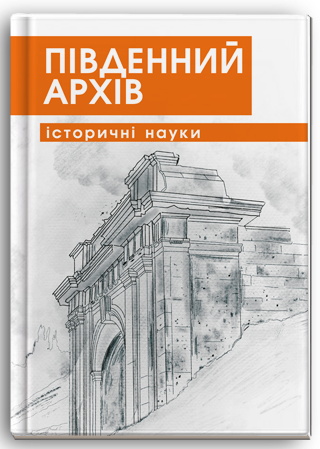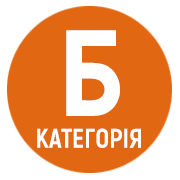“SPANISH CHILDREN” OF UKRAINE: EMIGRANTS FROM SPAIN}IN DNIPROPETROVSK AND THE REGION IN THE 1950S – 1980S.
DOI:
https://doi.org/10.32999/ksu2786-5118/2025-51-3Keywords:
Spaniards, political emigration, Spain, Dnipropetrovsk region, Soviet-Spanish relations, Ukrainian-Spanish relations, adaptationAbstract
The purpose of the study is to characterize the conditions of emergence, situation and peculiarities of the Spanish community in Dnipropetrovsk and the region in the 1950s – 1980s in the context of the history of Spanish exiles to the USSR, caused by the events of the Spanish Civil War (1936–1939). The research is based on unpublished documents from the State Archives of the Dnipropetrovsk region, materials from regional periodicals, memoirs of Spanish outcasts, and the results of studies on Spanish emigration to the USSR. Methods. The study was carried out at the crossroads of regional, local history and the history of international relations, using general scientific and special historical methods (historical and genetic, comparative, historical and chronological, biographical, etc.). Results. Since the 1950s, there has been another resettlement of Spanish emigrants, in particular the so-called “Spanish children”, within the USSR, some of whom were located in the Dnipropetrovsk region. The geography of their settlement was limited to cities (Dnipropetrovsk, Kryvyi Rih, Dniprodzerzhynsk, Marhanets, Nikopol), where there was a possibility of employment and adequate (in the eyes of the Soviet authorities) living conditions. The total number of Spaniards in the region in 1960 was 152. Despite the authorities’ desire to solve all domestic and social problems as much as possible, some Spanish emigrants were dissatisfied with their living and employment conditions, although most tried to adapt to them. This was facilitated by the opportunity to get an education and make a career, which was unlikely for many emigrants at home. The Red Cross provided significant financial assistance to emigrants. A Spanish center was established in Dnipropetrovsk, and a regional committee of the Communist Party of Spain was in place to take care of the community. There was also a community in Kryvyi Rih. Until 1971, the Druzhba International Club operated in Dnipropetrovsk, which was closed after a split among Spanish communists over the Czechoslovakian issue. Conclusions. The Spaniards in the USSR, specifically in the Dnipro region, can be called a diaspora in the sense that they had the opportunity to preserve, albeit with restrictions, their identity at the ethnic and institutional level. The regional authorities, the management of enterprises and institutions where Spaniards worked and studied, did their best to facilitate their integration into the collectives, cultivating the main ideologies of the USSR regarding their role in the events of the Spanish Civil War. When the Socialists came to power in Spain in 1982, most Spaniards began to leave for their homeland, and the small Spanish community in Dnipropetrovsk and the region gradually “dissolved” among the population, losing its institutional basis.The prospects of the study are to write a synthesis of the history of Spanish political emigration to Ukraine, which will significantly enrich the understanding of the content and essence of Soviet-Spanish relations and fill the gap in the history of Ukrainian-Spanish relations in modern times.
References
30 років у братній сім’ї. Зоря. 1969. 14 листопада. С.4.
Архів Дніпровського національного університету імені Олеся Гончара. Оп. 4 (Відділ аспірантури). Од. збер. 1499. Особова справа аспірантки Гарсіа-Каселес Кончіта. 106 арк.
Державний архів Дніпропетровської області (далі – ДАДО). Ф. 19: Дніпропетровський обласний комітет КПУ. Оп. 30. Спр. 36. 290 арк.
ДАДО. Ф. 19. Оп. 30. Спр. 48. 316 арк.
ДАДО. Ф. 19. Оп. 36. Спр. 74. 213 арк.
ДАДО. Ф. 19. Оп. 36. Спр. 75. 146 арк.
ДАДО. Ф.19. Оп. 54. Спр. 113. 83 арк.
ДАДО. Ф. 19. Оп. 57. Спр. 136. 159 арк.
ДАДО. Ф. 19. Оп. 60. Спр. 137. 78 арк.
Доменек М. Первая схватка с фашизмом. Днепровская правда. 1969. 13 ноября. С. 4.
Іваницька О. І. Особливості формування історичної пам’яті у політичних процесах сучасної Іспанії. Політичне життя, 2023. №. 4. С. 108–122. URL: https://istarhiv.chdu.edu.ua/article/view/86624 (дата звернення: 28.06.2025).
Інтернаціональна солідарність трудящих західноукраїнських земель з республіканською Іспанією: Збірник документів і матеріалів / Ред. кол. Ю. Ю. Сливка (відп. ред.) та ін. Київ: Наукова думка. 1988. 478 с.
Історія міста Дніпропетровська : монографія / за наук. ред. д-ра іст. наук, проф. А. Г. Болебруха. Дніпропетровськ : Грані, 2006. 580.
Кутняк А. Его седьмое путешествие. Днепр вечерний. 1987. 17 июня. С.3.
Портнов А., Портнова Т. Дніпро. Біографія великого міста в степу. Київ: Віхола, 2024. 208 с.
Снегин Ю. «Пепел Овьедо стучит в моём сердце…». Днепровская правда. 1969. 14 ноября. С. 3.
Сьомка В. Син республіканця. До 30-річчя приїзду в СРСР іспанських антифашистів. Зоря. 1969.
листопада. С.2.
Хмель А. Стан та перспективи розвитку іспаністики в незалежній Україні. Історичний архів. Наукові студії. 2016. Вип. 17. С. 158–167. URL: https://istarhiv.chdu.edu.ua/article/view/86624 (дата звернення: 28.06.2025).
Чума Б. Сучасна історіографія громадянської війни в Іспанії (1936–1939) та перспективи українських досліджень. Європейські історичні студії: науковий журнал. 2016. № 4. С. 261–278.
URL: http://eustudies.history.knu.ua/uk/bogdan-chuma-suchasna-istoriografiya-gromadyanskoyi-vijny-v-is-paniyi-1936-1939-ta-perspektyvy-ukrayinskyh-doslidzhen/ (дата звернення: 28.06.2025).
Cârstea L. I. The Republican exile in the Soviet paradise. Spaniards in Stalin’s Gulag. Journal of Iberian and Latin American Studies. 2021. 27(1). P. 41–61. URL: https://doi.org/10.1080/14701847.2021.1897754 (дата звернення: 28.06.2025).
Elpátievsky A.V. La emigración española en la URSS. Historiografía y fuentes, intento de interpretación (2a. redacción complementaria). Edición, traducción del ruso, prólogo y notas de Ángel Luis Encinas Moral. Madrid: Exterior XXI, 2008. 469 p. https://www.exterior21.org/publicaciones/08%20Yelpatievski%20FINAL.pdf (дата звернення: 28.06.2025).
Fuentes históricas para el estudio de la emigración Española a la U.R.S.S. (1936–2007) / por Á. L. Encinas Moral. Madrid: Exterior XXI, 2008. 589 p. https://www.exterior21.org/publicaciones/FUENTES%20HIS-TORICAS%20EMIGRACION%20URSS.pdf (дата звернення: 28.06.2025).
Kharitonova N. Edificar la cultura, construir la identidad: el exilio republicano español de 1939 en la Unión Soviética. Renacimiento, 2014. 260 p.
Niños de Rusia / Niños de La Guerra. URL: https://www.ninosderusia.org (дата звернення: 28.06.2025).
Portnov А. Dnipro. An Entangled History of a European City. Boston : Academic Studies Press, 2022. 376 р. (Series : Ukrainian Studies).
Fernández Préstamo, L. Antonio y Teresa: Destinos no escritos. https://www.ninosderusia.org/antonio-y-tere-sa-destinos-no escritos/ (дата звернення: 28.06.2025).
Rodríguez S. C. Memoria, educación e historia: el caso de los tifos españoles evacuados a la Unión Soviética durante la Guerra Civil Española. Madrid, 1999. 650 p. URL: https://www.ninosderusia.org/wpcontent/ uploads/2020/04/Memoria-Educaci%C3%B3n-e-Historia-de-Susana-Castillo.pdf (дата звернення: 28.06.2025).
Young G. Sujetos peligrosos? Repatriados españoles desde la URSS en la Provincia de Vizcaya, 1956–1963. Cuadernos de Historia Contemporánea. 2016. 38. P. 103–127. URL: https://www.ninosderusia.org/wp-content/uploads/2020/09/Sujetos-peligrosos-de-Glennys-Young.pdf (дата звернення: 28.06.2025).




